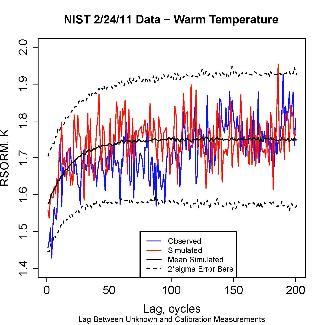Summary
The goal of the project is to improve calibration methodologies for microwave radiometers,particularly those employed on small satellites (termed "nanosatellites" or"CubeSats"). The problem of optimizing the time between calibrations is common throughout the radiometer community. We would like to balance our ability to obtain good measurements against time spent calibrating. Through the use of simulated and observed data, we will study different calibration procedures and develop methods that will provide the most efficient use of the radiometer.
Description
Using the NIST radiometer as a test bed, we studied the stability of temperature measurements for infrequent calibrations and developed stability metrics. We developed models to simulate output temperatures from the NIST radiometer, thus enabling the study of radiometer output without having to actually build physical devices. Our work to date is based on data from the NIST radiometer, the next step is to apply out methods to actual data from a radiometer on an orbiting satellite.

Major Accomplishments
We developed multivariate, non-stationary time series models and simulation methods for the NIST radiometer. Stability metrics were developed for quantifying drift due to infrequent calibration. We explained temporal correlation structures in observed data and stability metrics for NIST radiometer (with NASA).
A presentation was given at the CALCON Technical Conference, August 27-30 2012, Logan, Utah, "A Numerical Simulator for Noise Calibration Studies," P. Racette, T. Clune, M. Wong NASA Goddard Space Flight Center, D. Walker, K. Coakley, J. Splett, NIST, D. Rivers, R. Leonard, E. Boone, Virginia Commonwealth University.

